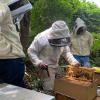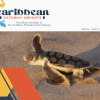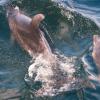Improving Forest And Protected Area Management In Trinidad And Tobago Research Paper
This report describes the activities and findings of the marine protected area specialist team engaged
by the FAO Trinidad and Tobago Country Office in June and July 2013 to contribute to the overall project:
“Improving Forest and Protected Area Management in Trinidad and Tobago (GCP/TRI/004/GFF)”.
The activities of the team focused on a proposed marine protected area in North East Tobago.
The main areas of attention were: a literature review; evaluating the potential for ecotourism;
strategies for management, monitoring and species conservation; threats, barriers and mitigation measures;
stakeholders and impacts; capacity development needs; baseline data and support for development of the
funding application.
Information was drawn from three sources, peer-reviewed and publically available literature, semistructured interviews and consultations with community members and groups in North East Tobago, and
expert assessments.
Nearly 100 grey and peer-reviewed literature sources were reviewed. Of these, 30 were selected for
their relevance to the project: MPA management / mitigation, biodiversity, socio – economics, threats, and
fisheries. Sources for baseline data relevant to an MPA in NE Tobago were summarised.
A total of 29 key-stakeholders, representing civil society organisations in the target area, were
identified and 16 interviews conducted. Three informal focus group were conducted (Speyside, Charlotteville,
Parlatuvier).
The potential for ecotourism was evaluated based on several criteria: a clear understanding of the
main elements of a true eco–tourism product, existing natural resources, existing types of tourism, emerging
human and organisational capacity, interest to develop the destination and, types of funding sources. The
potential was rated as good and several ecotourism activities were recommended.
Ecosystem-based management was recommended as the preferred strategy for presently unprotected,
endemic and threatened species and three resources are mentioned for reference. It was pointed out that EBM
needs to be “place-based” in order to be successful. EBM for the proposed MPA integrates well with a wider
Ecosystem Approach to sustainable development and conservation in NE Tobago. A table showing the
conservation status of selected species was developed from which a list of indicator species can be selected
through a participatory process. Proposed taxa of relevance to MPA management in NE Tobago included:
hard corals, commercial fish species, reef grazing species, pelagic bird species, sharks and rays, marine
mammals, marine turtles and the lionfish (an invasive species).
Area of interest: Trinidad & Tobago
Year: 2013




